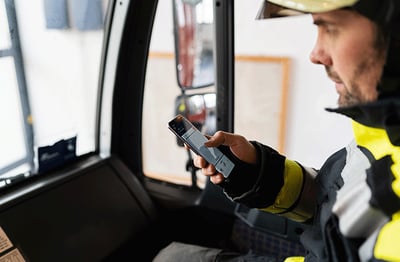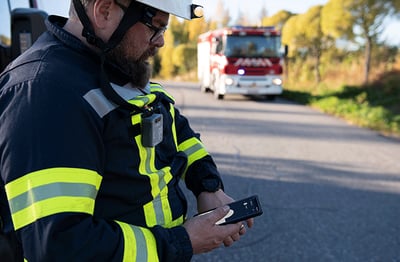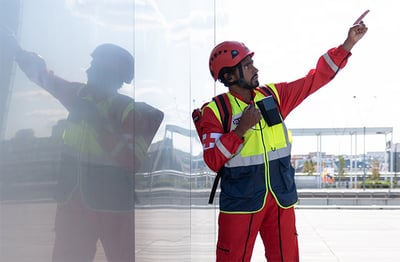Police officers could scan crowds for known criminals, fugitives, or terrorists using facial recognition applications. Commanding officers could soon be able to track firefighters inside burning buildings where GPS does not go. And emergency medical care personnel could soon be able to observe patients for symptoms — before the ambulance reaches the scene of the accident.
Which applications would best help police, rescue, and emergency medical care?

Many mission-critical applications are already available and widely in use.
1. Find people and vehicles wherever they are.
Police, fire and rescue dispatchers can monitor the location of officers and units using GPS or other tracking technology embedded in radios, then display it on an electronic map.
2. Read license plates from afar.
Police officers can read license plates from remote locations with a local app. Just program cameras in parking areas to snap licence plates or ask officers on patrol to take the picture with a handheld device.
Officers in the field could even compare license plates against a database of stolen vehicles by sending them over a radio, using applications.
3. Run background checks without returning to headquarters.
Police officers can run automatic background checks against several databases while on patrol. Officers just input the person's name or social security number or other ID number into a form on their handheld or vehicle radios and see results in a second.
Finnish police officers routinely use this application.
4. Get patient data to the ER — stat.
Emergency medical care personnel can help emergency room staff members prepare for an inbound patient by continuously transmitting patient data via medical telemetry apps.
PMR networks, designed for high availability, provide a more reliable alternative to commercial networks, which can drop calls made on the move. High availability is essential when lives are at stake.

5. Stop typing up driver's licenses.
Police offers no longer have to input driver's license details manually. They can just scan the license to relay data from the field to headquarters far more quickly.
6. Improve decision making in the field.
Command and control can transmit building and floor plans to the fire trucks when a mobile data connection is available. The workers in the field would have fresh information in the offline version even without the real time connection. SAFEcommand is an example of such an app, already in widespread use.
7. Fingerprint suspects on the go.
Ink is for amateurs. It is possible to identify people in the field with a live fingerprint scanner.
App opportunities
Police, fire and rescue, emergency medical care and event security personnel would greatly benefit from a few apps that are not so common yet, or not completely mission critical (reliable, always available, and secure).
8. Scan a crowd for known criminals or terrorists.
Police and security can use facial recognition on people in crowds or on queues and automatcially compare an image to a database of persons of interest.

9. Go beyond GPS.
Command and control will soon be able to track fire and rescue workers indoors, where GPS can't reach, with indoor location/tracking apps.
10. Push to talk.
TETRA push-to-talk can be brought into smartphones. With an app, a smartphone user can communicate in a TETRA talk group - with people who carry a TETRA radio and also with the control room. The app can connect the people vital to an operation, even when they use different devices and technologies.
High ranking police officers could then choose to carry only a smartphone. Still, they could take part in the communications related to an operation.
A doctor might not need TETRA talk groups very often. But she might need them sometimes when on call. For this, she would only need a smartphone and the special app.
Tactilon Agnet, for example, can bring TETRA push-to-talk to smart devices.
Public safety organizations would benefit from richer data apps – like the ones on smartphones – but they also require mission-critical coverage, availability, and security.
Or do they?
See what users value in applications in general and download the latest professional apps survey report "Professional app trends 2022 - 37 things you wish you'd known earlier"
-----
This blog post was updated in April 2022 to include a link to the latest survey report.





